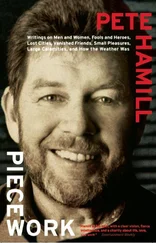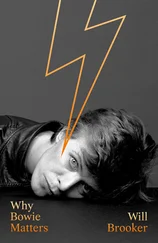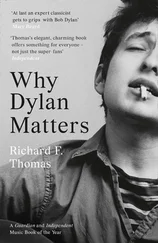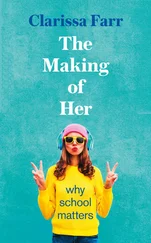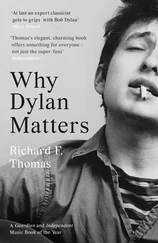Alan Livingston, then a vice-president in charge of artists and repertoire at Capitol Records, had already brought up a name.
“Do me one favor, and do yourself a favor,” Livingston told Sinatra. “Work with Nelson Riddle.”
And so he did.
III . Nelson Smock Riddle Jr. was born in Hackensack, New Jersey, on June 1, 1921, about a half an hour from where Frank Sinatra was growing up in a much different way. Riddle’s father, of Anglo-Irish and Dutch descent, was a commercial artist who loved popular music and played a little trombone. His mother had Alsatian and Spanish roots and loved the literary and musical classics. Both parents encouraged their son’s musical ambitions. Riddle started taking piano lessons when he was eight, and when he was fourteen, he turned to the trombone, using his father’s instrument. That was 1935, and again we see the effects of the Depression. He began taking trombone lessons from a Professor Dittamo in Paterson.
“After eight lessons,” Riddle wrote, in an autobiographical sketch published in 1985, “the professor told me not to come again, since my dad had not paid him anything so far. It seems his fee was one dollar a lesson, and this being 1935, dimes , much less dollars , were difficult to come by for anything more esoteric than a loaf of bread.”
The piano lessons stopped; the music didn’t. Riddle joined the Ridgewood High School band and, after his junior year, started playing with “kid bands” around the town of Rumson, getting permission from his parents to stay alone in a summer bungalow without electricity. Just before his senior year, he met Bill Finegan, who was older than Riddle and already arranging for bands out of his home in Rumson. “We would sit up all night listening to classical music, especially that of Shostakovich, whose First Symphony, premiered in 1937, captured Bill’s interest and imagination.” Finegan began teaching Riddle the basics of arranging for dance bands, giving him assignments, correcting his work. Those lessons ended when Finegan went off to work for Glenn Miller. But he had set some high standards for young Riddle.
“Bill Finegan taught me to enjoy and appreciate the classics as the prime source of musical richness,” Riddle remembered later. “He also, by example, showed me that much effort is required to produce one’s best work and that it is unwise and unfair to settle for any less. I remember showing up for a lesson one afternoon and being confronted by a very exhausted Finegan, up all the previous night, unshaven, red-eyed, and standing in the midst of a small pile of score pages, representing no less than twenty-six possible introductions for the same arrangement, as yet unfinished.”
During this period one of Riddle’s aunts gave him one of those wind-up Victrolas that were changing Frank Sinatra’s Hoboken, along with the rest of the country. She also presented him with a 78 rpm recording of Debussy performed by Paderewski. He remembered playing it over and over again, trying to understand its components. In the bungalow in Rumson, however, he had no radio. On weekends Riddle’s father would drive down from his studio in Ridgewood, and the young musician would sit in his father’s car, listening to classical and popular music on the car radio. Often the car battery would go dead. “In contrast, however, my personal musical battery was always ‘super-charged’ by the time the weekend was over.”
On his nineteenth birthday, in 1940, Riddle landed his first professional job, playing trombone and doing some minor arranging for an Artie Shaw carbon copy named Tommy Reynolds, and then moved up to the Charlie Spivak orchestra. This was a good swing band, ranking just below the top level, and it was a great place to serve an apprenticeship. Riddle spent two years with Spivak, learning something every day, as Sinatra had with Harry James and Tommy Dorsey. But now the war was on, and Riddle was facing the draft. To avoid the army, he left Spivak for the Merchant Marine band, based in Sheepshead Bay, Brooklyn, where he first arranged for strings. He was there for eighteen months, playing at concerts, dances, and parades, having fun. Then he was abruptly declared 1-A; he reported for induction but was put into a bureaucratic limbo and told to wait. He then got the dream job: working in the Tommy Dorsey orchestra. Sinatra was gone, but Riddle was able to dig into the glorious library of Dorsey arrangements done by his friend Finegan, Eddie Sauter, and Hugo Winterhalter, along with earlier works by Sy Oliver and others. As a trombone player, Riddle admired Dorsey; he also liked him, which was not as easy.
“Tommy was pleasant to me in his own particular gruff way and quite supportive of my budding career as an arranger,” Riddle said. “He was, and always will be, one of my heroes.”
In April 1945 the army finally demanded the immediate services of Nelson Riddle. The war was almost over, and Riddle never left the United States. For “fifteen fun-packed months” he worked in an army band, and was discharged in June 1946. But during his army service, his teeth were knocked out in an accident; he was never able to play trombone effectively again and was forced to commit to arranging and, he hoped, composing. He free-lanced around New York for a few months and then left for the West Coast, where he thought he had a job with the Bob Crosby orchestra; that gig evaporated almost as soon as he arrived, and he cobbled together a living as a freelancer. Like millions of other young men, he also took advantage of the educational benefits of the GI Bill, which for Riddle meant studying with an Italian composer named Mario Castelnuovo-Tedesco. “His method of teaching orchestration was to have his young pupils study a piece written for piano and assign the voices, or lines, in the piano solo to various sections or solo instruments of the orchestra. I found this process to be a most instructive and broadening experience, since many of his pianistic examples were works of such brilliant and diversified composers as Albéniz, Schubert, Brahms, Debussy and many more.”
Riddle always credited Castelnuovo-Tedesco with giving him “skill and fluency” in handling large groups of instruments and later regretted that his commercial success forced him to cut short his studying after two years. At the same time, Riddle was studying with a Russian named Victor Bay, who taught him the rudiments of conducting. Through this period his family was growing; to support his wife and three children, he arranged music for NBC Radio and freelanced for film composer Victor Young. He took whatever other work he could get, as Sinatra would say later, to put food on the table; some members of the Depression generation never had the psychological luxury of turning down jobs. But in 1950 and 1951 he broke through. He had arranged, without credit, two tunes for the singer and jazz pianist Nat Cole. One was “Mona Lisa.” The other was “Too Young.” Each was a gigantic hit. Cole insisted that he wanted Riddle for his future work, and Riddle soon joined the staff at Capitol Records. He was there when Frank Sinatra arrived in the spring of 1953.
The odd thing was that Sinatra didn’t seem to know much about the thirty-one-year-old Riddle when they did their first session together on April 30, 1953. Perhaps he was too absorbed in the melodrama of the Fall to notice the huge success of “Mona Lisa” and “Too Young”; perhaps he just didn’t want to know about it. But according to Will Friedwald, in his exhaustive (and excellent) book Sinatra! The Song Is You, Sinatra thought he was cutting four sides by bandleader-arranger Billy May. In fact, Riddle, with May’s agreement, had arranged two tunes in May’s style and two in his own. When Sinatra saw Riddle in the studio, his first question was “Who’s he?”
Читать дальше



